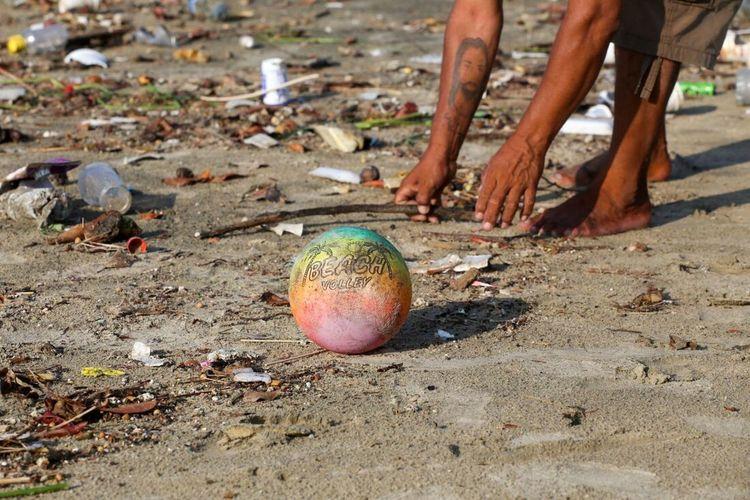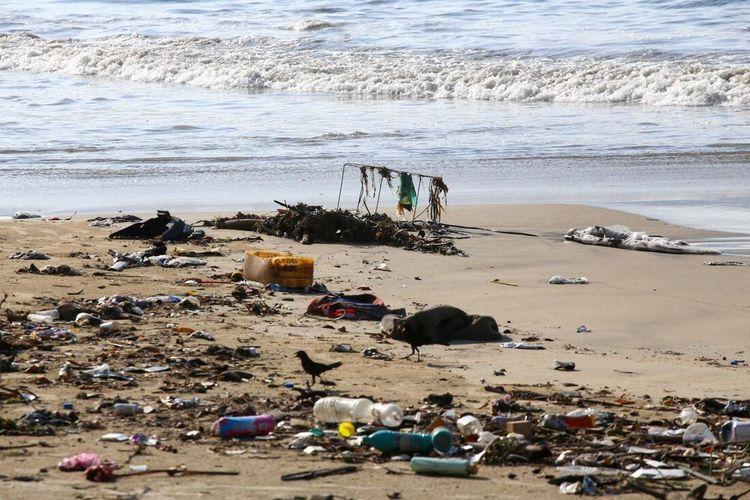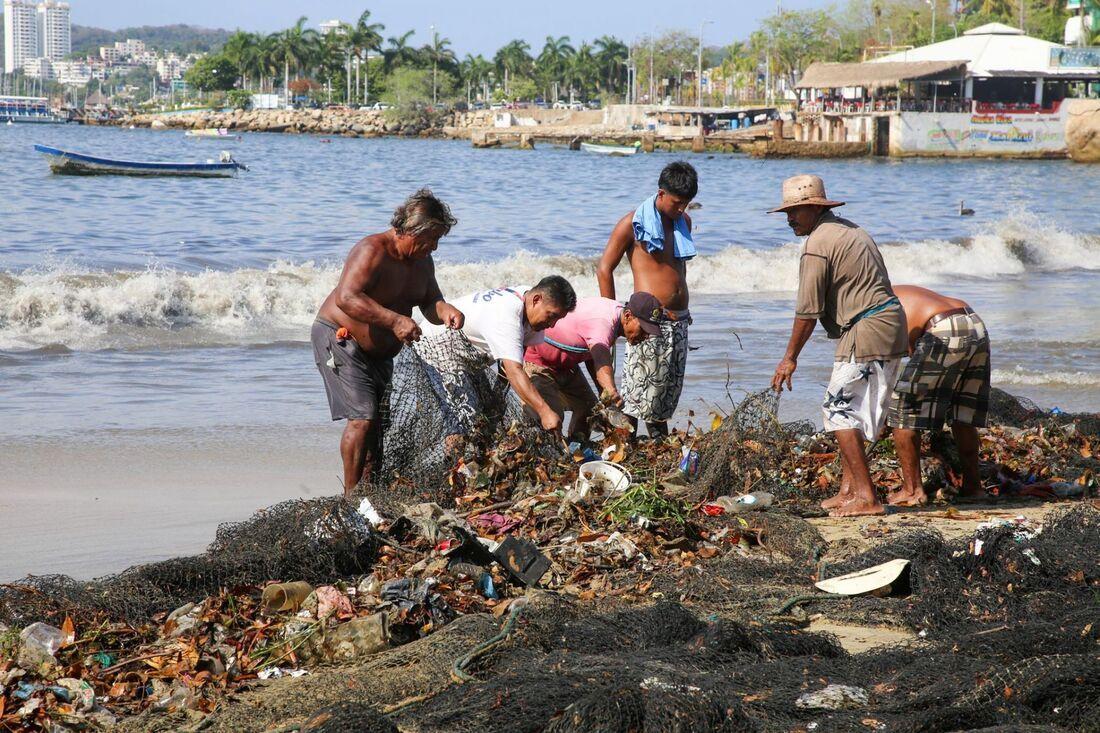The rainy seasons in Acapulco, Guerrero, remove waste from the streets and drag it to the beaches. In areas such as Costa Azul, the system of channels for draining rainwater has garbage plugs and construction material such as clay.
“It's raining and the first thing that comes out is a river of black water. There are even people waiting to take a picture of how this water spreads as a result of rainwater drainage, which at the time was very well planned, but unfortunately it has been getting flooded,” said Juan Barnard, a marine biologist and underwater photographer from Acapulco.
For the past 40 years, Barnard has been involved in underwater clean-ups. These are also carried out on land, both by citizen initiatives and by municipal personnel in charge of rainwater channels and dams.
However, efforts continue to be concentrated in the beach area, despite the accumulation of garbage in irregular landfills in the city, as documented by citizens, in addition to wastewater spills that have been the subject of dissemination and reporting in recent years.

Acapulco beaches after the first rain of the season in mid-June. Photo: Carlos Alberto Carbajal/cuartoscuro.com
“In Acapulco, as in many coastal municipalities, the hydrosanitary systems are already very old or are very fractured—we must remember that we are a seismic zone—so we have leaks both in fresh water, which must reach our homes, and also to these treatment plants,” Barnard said.
Irregularities in the infrastructure and operation of treatment plants are not unique to Acapulco.
In 2018, the National Autonomous University of Mexico (UNAM) published its Environmental Diagnostic Agenda and Proposals in which it was reported that only 57% of municipal wastewater collected throughout the country had treatment, leaving the other half in a category of “terrible to malfunctioning”.
“Wastewater contains uncontrolled pathogens, antibiotics that increase the resistance of bacteria, heavy metals, waste from personal and household hygiene products, derived from fuels, industrial solvents, pesticides and plastics,” the report states.
Just last year, the Federal Commission for Protection against Health Risks (Cofepris) classified Acapulco's Hornos, Suave and Manzanillo beaches as “unsuitable” in its beach monitoring, which it develops prior to the Easter holiday season.
In coastal cities such as Acapulco, as it is a tourist region, urban growth and real estate development have also been part of the problem.
In March, the Armando's Le Club condominium, located in the Costa Azul subdivision, was closed due to the discharge of wastewater on Icacos beach. The staff of the Drinking Water and Sewerage Commission of the Municipality of Acapulco (Capama) and the Department of Ecology and Environment were responsible for the closure and the fine.
In previous years, Capama has denied that there are waste spills despite complaints on social networks and has stated that they are only rainwater drains.
However, local media reported in May that director Héctor Alejandro Juárez Amador declared that 13 treatment plants in the city are not functional and an investment of 7 billion pesos is required for their rehabilitation
Journalism CN contacted the agency to corroborate the statements, but the answer was that they would not provide information about it.

Acapulco beaches after the first rain of the season in mid-June. Photo: Carlos Alberto Carbajal/cuartoscuro.com
Meanwhile, beach cleaning days are being maintained through different initiatives. But for biologist Juan Barnard, there is still apathy and lack of environmental education in the city. This allows the camouflage of garbage dumps that will reach the beach during the rainy season (from June to September).
“Currently, there is a daily army that since 6 in the morning travels the strips of the beach (to do cleaning). And now many youth groups are campaigning continuously. That's a very nice part because it talks about the awareness that is being done. But if we put it on a scale, we are still overwhelmed by this unconsciousness that translates into solid waste,” Barnard said.
For its part, the Guerrero government has recently taken some steps, such as the signing of an agreement to operate a pilot wastewater treatment program through wetlands. It will be the first of its kind at the entity level. No recent announcements have been made about treatment plants.



Comentarios (0)